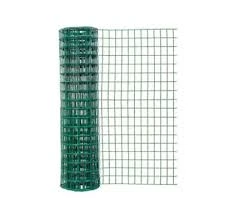Nov . 19, 2024 15:01 Back to list
iron nail manufacture
The Manufacture of Iron Nails A Comprehensive Overview
Iron nails have been a fundamental component of construction and woodworking for centuries, serving as essential fasteners for various applications. The manufacture of iron nails has evolved over time from the rudimentary techniques of blacksmithing to modern production methods that ensure efficiency and consistency. This article delves into the manufacturing process, the materials used, and the various applications of iron nails.
Historical Context
The history of iron nail production can be traced back to ancient civilizations. Initially, nails were handcrafted by blacksmiths, who heated iron rods and shaped them into nails using hammers and anvils. This artisan approach allowed for flexibility and customization but was labor-intensive and time-consuming. With the advent of the Industrial Revolution in the 18th century, nail production underwent a significant transformation. The introduction of machinery streamlined the process, enabling mass production and making nails more affordable and accessible to the general public.
Raw Materials
The primary raw material used in the manufacture of iron nails is iron ore, which is eventually refined into steel. The steel used for nail production typically comprises a specific blend of iron and carbon, giving the nail strength and durability. In addition to iron and carbon, manufacturers may introduce other alloying elements to enhance corrosion resistance and tensile strength. Commonly used materials include zinc for galvanization, which helps prevent rust, and various coatings to improve the nail's visual appeal and longevity.
Manufacturing Process
The manufacturing process of iron nails can be divided into several distinct stages
1. Preparation of Raw Materials The process begins with the extraction and refinement of iron ore into raw iron or steel. This involves smelting the ore in a furnace to remove impurities and create a more workable material.
2. Wire Drawing The iron or steel is then drawn into wire of appropriate diameter. This process involves feeding the material through a series of dies that gradually reduces its diameter, ensuring that it meets the specifications required for nail production.
3. Cutting and Shaping Once the wire is prepared, it is cut into specific lengths that will become individual nails. The cut wire is then shaped into nails using a machine known as a nail maker. This machine applies pressure and forms the wire into the desired shape, including the head and point of the nail.
4. Heat Treatment To enhance the nails' strength, they undergo a heat treatment process. This involves heating the nails to a specific temperature and then rapidly cooling them, which alters the microstructure of the metal, improving its hardness.
iron nail manufacture

5. Finishing After heat treatment, the nails are cleaned and may go through additional processes such as galvanization, where a protective zinc coating is applied to prevent rust. Finally, nails are sorted and packaged for distribution.
Types of Iron Nails
Iron nails come in various types, each suited for different applications
. Common types include- Common Nails Versatile and widely used for general construction and carpentry, they have a flat head and are easily driven into wood.
- Finishing Nails These nails have smaller heads and are used where a smooth finish is desired, as they can be driven below the surface of the wood.
- Box Nails Slightly thinner than common nails, box nails are used in lighter construction and for fastening thin materials.
- Specialty Nails These include roofing nails, masonry nails, and others designed for specific tasks, each featuring unique characteristics to enhance their performance in particular applications.
Applications
Iron nails find extensive use in construction, woodworking, and manufacturing. They are essential for building structures, framing, and assembling furniture. Additionally, their strong hold and durability make them ideal for outdoor applications, where exposure to the elements is a concern. Galvanized nails, in particular, are favored in roofing and siding projects due to their resistance to corrosion.
Conclusion
The manufacture of iron nails is a fascinating process that combines traditional techniques with modern technology. As an indispensable fastener, iron nails have played a crucial role in countless constructions and projects throughout history. With ongoing advancements in materials and manufacturing methods, the future of iron nail production is likely to see further enhancements, ensuring that these essential components continue to meet the demands of various industries. Whether for a simple woodworking project or a large construction site, iron nails remain a key element in the world of building and craftsmanship.
-
The Power of Iron Wire: A Versatile Solution for Multiple Applications
NewsJun.19,2025
-
Reliable Hydraulic Fittings for Optimal Performance
NewsJun.19,2025
-
Quality Roofing Nails for Every Project
NewsJun.19,2025
-
Hexagonal Wire Mesh: Versatile and Durable Solutions for Every Project
NewsJun.19,2025
-
Enhancing Security with Barbed Wire Solutions
NewsJun.19,2025
-
Binding Wire: The Essential Material for a Variety of Applications
NewsJun.19,2025









